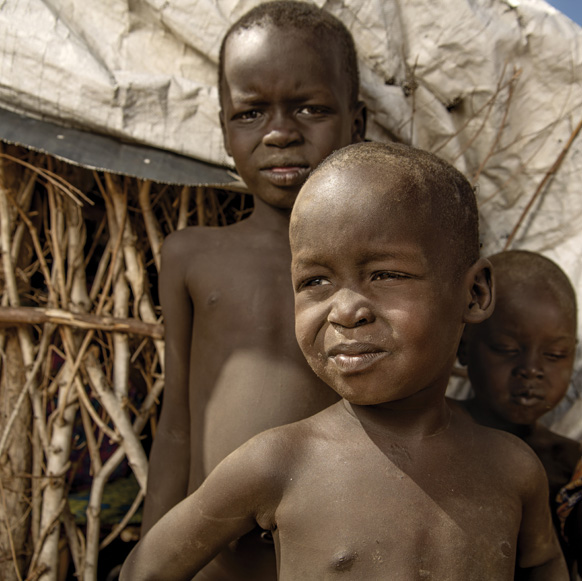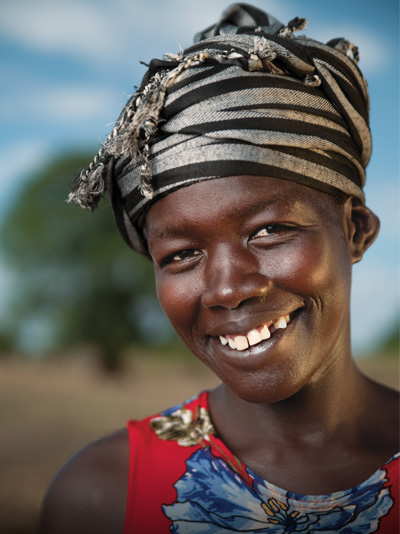Meet Mary
When you meet Mary Baga, you instantly see a deep joy shining through her beautiful smile.
When asked to visit her home in Juba, South Sudan, images of a small thatched hut, maybe a goat or two, filled our minds. Yet, as we arrive in her community, we get the sense that we stopped too early. “Where are the houses?”
In the distance we see a group of children. Their curiosity leads them to our vehicle. We notice the children’s clothing tattered and worn—their faces caked with an almost charcoal hue from the dirt. Some of the children wear no clothes at all, but they do their best to cover up. Their attempts at modesty convey a sense that they know they’re among the poorest, most forgotten people on earth.
As we look around, we discover Mary’s not there. She’s gone to find food. We ask, “Where’s her home?” We’re shown a nearby empty spot. Someone answers, “Her house was here, but the wind blew the tarp away.”
THEN IT HITS US ALL AT ONCE. THIS IS IT. THESE CHILDREN WITHOUT CLOTHES ARE MARY’S.
In this barren and rugged place, we come to understand and feel the presence of God because we begin to feel His children’s pain.
Mary’s story is far from over—it’s only the first act. Her old life is fading away as she’s discovered God’s love through Watoto. She’s learning business skills, receiving spiritual discipleship, and beginning to provide for her children. Mary’s finding our what it means to be empowered.
Driving closer to town, we find Mary walking. Wearing her only dress, her smile paints a picture of her faith and belief in a better tomorrow. We’re excited to see the future for Mary, her children, and the thousands of women just like her.
Meet Mary
When you meet Mary Baga, you instantly see a deep joy shining through her beautiful smile.
When asked to visit her home in Juba, South Sudan, images of a small thatched hut, maybe a goat or two, filled our minds. Yet, as we arrive in her community, we get the sense that we stopped too early. “Where are the houses?”
In the distance we see a group of children. Their curiosity leads them to our vehicle. We notice the children’s clothing tattered and worn—their faces caked with an almost charcoal hue from the dirt. Some of the children wear no clothes at all, but they do their best to cover up. Their attempts at modesty convey a sense that they know they’re among the poorest, most forgotten people on earth.
As we look around, we discover Mary’s not there. She’s gone to find food. We ask, “Where’s her home?” We’re shown a nearby empty spot. Someone answers, “Her house was here, but the wind blew the tarp away.”

THEN IT HITS US ALL AT ONCE. THIS IS IT. THESE CHILDREN WITHOUT CLOTHES ARE MARY’S.
In this barren and rugged place, we come to understand and feel the presence of God because we begin to feel His children’s pain.
Mary’s story is far from over—it’s only the first act. Her old life is fading away as she’s discovered God’s love through Watoto. She’s learning business skills, receiving spiritual discipleship, and beginning to provide for her children. Mary’s finding our what it means to be empowered.
Driving closer to town, we find Mary walking. Wearing her only dress, her smile paints a picture of her faith and belief in a better tomorrow. We’re excited to see the future for Mary, her children, and the thousands of women just like her.
